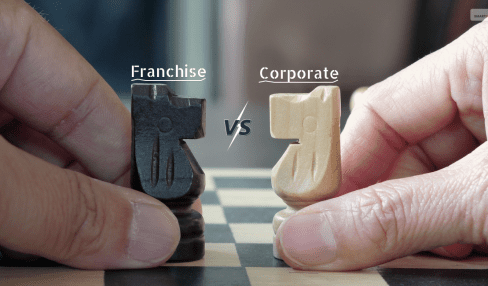How to Create a Roadmap for Business Succession Planning
01 October 2025
5 Mins Read

Most business owners spend years building their companies, but only minutes thinking about what happens when they leave. The hard truth is that many family businesses don’t survive to the second generation, and even fewer make it to the third.
Your business represents decades of work, countless sleepless nights, and dreams turned into reality. Yet without a clear succession plan, all of that could disappear when you retire, become ill, or pass away unexpectedly.
The good news? Creating a roadmap for business succession can ensure your legacy lives on even after you’re gone. Whether you plan to hand the reins to family members, sell to employees, or find an outside buyer, having a solid succession plan gives you control over your company’s future.
Let’s walk through how to build a roadmap that protects both your business and your peace of mind:
Assess Potential Successors
The first step on your roadmap is to determine who will lead the business forward. Candidates can come from inside or outside your company, and it’s smart to consider all options objectively.
- Internal candidates: Consider family members who may be eager to lead or a long-standing key team member who already knows the ins and outs of daily operations. Understand that some family members may prefer not to take on a leadership role, which is fine.
- External candidates: These successors may be the right answer, especially if capability gaps exist within your current team. Identifying these gaps early helps you understand where new hires or leadership development will be needed.
For every potential successor, create a clear list of skills needed for the future leadership role. This step clarifies whether the next generation or a key team member is truly ready or outside support might be a safer, more stable option.
To ensure you make the right decision, consider working with experienced professionals who offer business succession planning advisory services. They can provide an objective perspective, highlight potential blind spots, and assess the readiness of internal candidates with unbiased tools.
Identify Key Roles and Needs
After considering who might lead, consider the positions that are essential to keeping your company stable. Leadership positions aren’t the only ones that matter. Critical roles may also include people who manage business relationships, oversee business assets, or maintain financial statements and balance sheets.
Once you know which roles are most important, outline the specific skills and qualities needed for each. For instance, some leadership roles may demand technical expertise, while others require strong decision-making and communication skills. Outlining these needs now makes it easier to match succession candidates with the right positions later.
Develop Training and Mentorship Plans
In addition to choosing successors, succession planning is also about preparing them. Developing training programs and mentorship opportunities could help prepare future leaders for what lies ahead.
For example, a family member interested in taking over may benefit from shadowing current leaders to learn about operational exit planning. A management succession plan could also include rotating successors through different departments to expose them to every side of the business.
This step takes time, but it allows potential successors to grow gradually. It may also highlight talent needs that aren’t being met. Addressing those needs could involve leadership development workshops, ongoing coaching, or hiring outside advisors.
Communicate the Plan
Once you’ve drafted your roadmap, consider how you’ll share it. Clear communication can reduce confusion later, especially if multiple succession candidates are involved. For example, family members may want reassurance about their roles, while a business partner may need clarity about how ownership transfer would work.
That doesn’t mean every detail has to be public. Some information may be best kept between senior leaders or owners. The goal is to provide enough transparency so key stakeholders understand the direction of the business succession plan without leaving room for misunderstandings.
Document Processes and Knowledge
Even the most qualified successor may struggle without clear documentation. A strong business succession plan includes detailed records of processes, business operations, and ownership documentation. This could cover supplier contracts, team member handbooks, and day-to-day workflows.
Financial records are equally important. Updated balance sheets, business valuation reports, and complete financial statements can give successors a clear picture of the company’s current state. Without this information, ownership transfer could become confusing and cause delays.
Outline Transition Scenarios
A good roadmap should include several plans. You might plan to retire at a set age, but unexpected events could change that timeline. That’s why it’s smart to map out several scenarios.
One could involve transferring leadership roles to family members at retirement. Another could involve a management buyout where key employees take ownership. A third might focus on selling to an outside buyer if no internal successors are available.
Thinking through these exit strategies doesn’t mean you expect them all to happen. It simply means you’re giving your business options. It also makes it easier for family businesses to avoid conflict since the roadmap already outlines what could happen under different circumstances.
Review Legal Considerations
A strong succession plan needs a clear legal foundation. This may include reviewing ownership documents, updating shareholder or partnership agreements, and ensuring contracts reflect current business arrangements. It’s also important to outline legal obligations around employment, governance, and compliance so successors know exactly where responsibilities lie.
Working with legal advisors can provide clarity and help reduce the risk of disputes during a transition. They can guide you through the formal requirements for transferring ownership, drafting succession agreements, or preparing contingency clauses for unexpected changes. Taking care of these legal details early can make the transfer more straightforward and less stressful for everyone involved.
Keep the Roadmap Flexible
Business succession planning isn’t a one-time task. Companies evolve, family dynamics change, and new opportunities appear. Regularly reviewing your succession planning process could keep it aligned with current business operations. Flexibility allows you to adapt when new talent emerges or leadership roles need to shift.
Your roadmap is a living document. Updating it every year or two ensures it reflects your company’s present situation. That way, whether you decide on an ownership transfer to the next generation, the roadmap could still guide you through.
Conclusion
Don’t leave your business’s future to chance. A succession plan turns uncertainty into control, securing the legacy you built. This roadmap ensures a smooth transition, protecting your company, employees, and family’s future. It’s the final, critical step in your journey as an owner. Start creating your plan now. Give yourself peace of mind by knowing your life’s work is prepared for tomorrow.

















